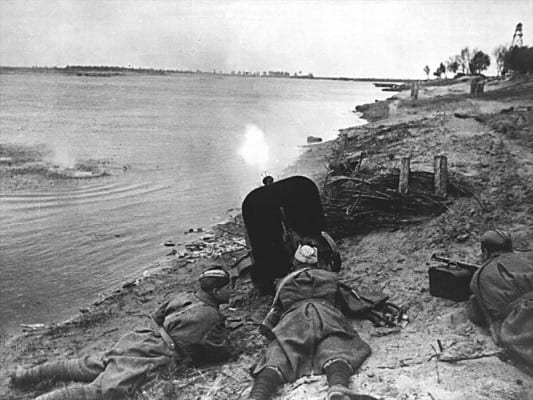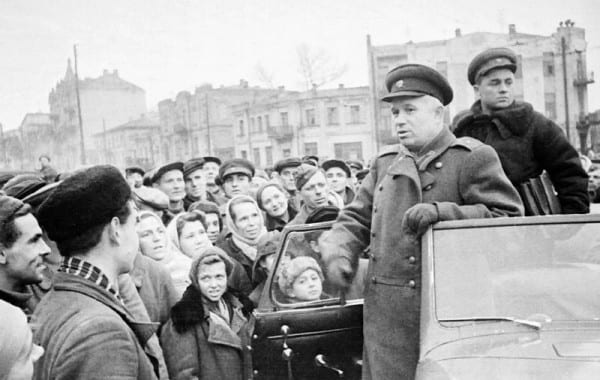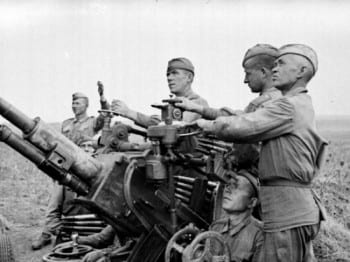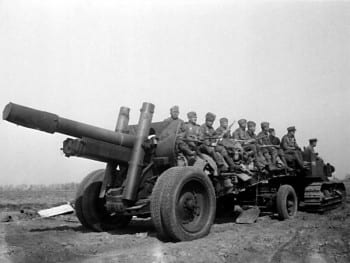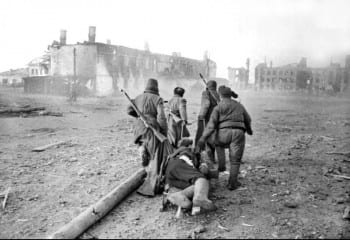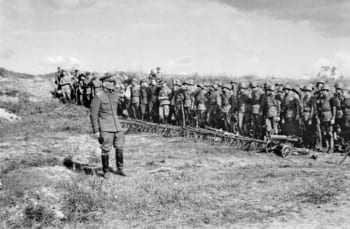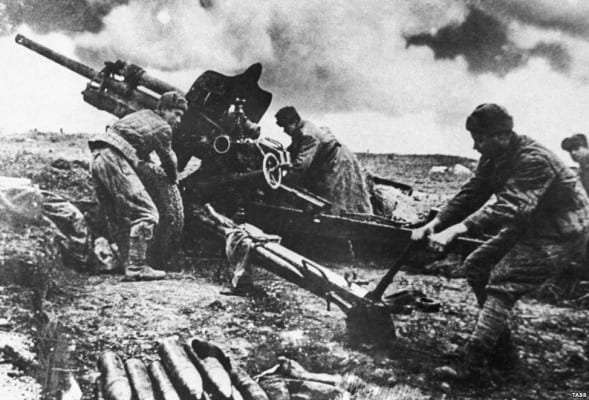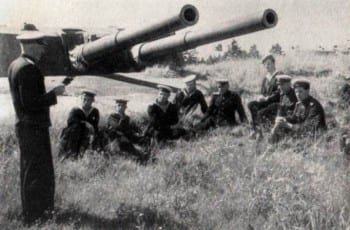ERASING HISTORY ||| The Siege of Sevastopol (1941-42): Why Crimea Matters to Russians
Article by Alevtina Rea. Preface by Alexander Mercouris
This is a repost. First published on April 8, 2015
I: The current historical setting—
Russians weren't going to lose a city they had heroically defended against Germans in 1941-42 to NATO tricks in 2014
Crimea reunited with Russia after nearly 96 percent of voters supported the move in a March 2014 referendum. Moscow has repeatedly stated that Crimea’s residents decided to rejoin Russia through a democratic procedure, and that the referendum was conducted in compliance with international law. The disinformation machine of US/NATO, which includes the entire news manipulation apparatus of the European Union, has denounced this election, calling it an "annexation", or simply a "takeover", loaded words used for decades during the first Cold War to attack Moscow.
Preface
The Siege of Sevastopol during the Second World War is almost unknown in the West. If most educated Westerners have some knowledge of the battles of Moscow and Stalingrad and of the siege of Leningrad, scarcely any know of the passionate eight-month defence of Sevastopol against overwhelming odds in what was for the Russians the darkest period of the war.
There are times when this ignorance appears to be the product less of indifference and more of deliberate historical suppression.
For historically-minded Britons words like “Siege of Sevastopol” and “Crimean War” conjure up memories not of the Second World War but of the war the British and French fought in the Crimea against the Russians from 1854 to 1856.
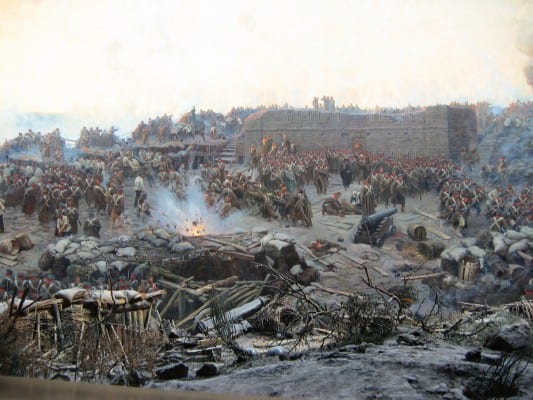
The Siege of Sevastopol, by Franz Roubaud, memorializes the assault of that city by a Franco-Turco-British force against Russian defenders. The Siege lasted from September 1854 until September 1855, during the Crimean War. The allies' armies peaked at about 175,000 men, while the Russian garrison never exceeded 38,000. (Click to expand)
Memories of that earlier war seem at times to be used to obscure the far greater and more important war that was fought in the Crimea during the Second World War. Consider for example a recent work from 2010 like “Crimea: The Last Crusade” by the British historian Orlando Figes. Not only does this work about the Crimean war of the 1850s manage to make no reference to the far greater conflict fought in Sevastopol and the Crimea during the Second World War, but it contains deeply misleading passages like this one:
“…..In Sevastopol there are ‘eternal flames’ and monuments to the unknown and uncounted soldiers who died fighting for the town. It is estimated that a quarter of a million Russian soldiers, sailors and civilians are buried in mass graves in Sevastopol’s three military cemeteries”.
These words contain no hint that the great majority of the ‘eternal flames” and ‘monuments” - and the great majority of the “soldiers, sailors and civilians” buried anonymously in mass graves - concern the siege Sevastopol of the Second World War, not the one of the 1850s. Nor is there any such hint of that in any other part of the book. In fairness Figes’s book does admit that Sevastopol “remains an ethnic Russian town”, that the loss of Crimea was “a severe blow to the Russians” and does quote the words of a poem lamenting the loss of Sevastopol by a Plokhy, a modern Russian poet (“the City of Glory”)
On the remains of our superpower
There is a major paradox of history:
Sevastopol - the city of Russian glory -
Is…outside Russian territory
Nonetheless the failure to acknowledge or even to hint at the existence of the Siege of Sevastopol of the Second World War - the single greatest event in the history of the city - is frankly bizarre in a historical book that is in large measure about the city. It is as if the Russian history of Sevastopol - with all it means to the Russian people - has to be suppressed except when it touches on British or French history, as in an account of the war of the 1850s written of course from a Western angle. Such suppression of historical truth is of course ultimately an exercise in historical falsification. The Siege of Sevastopol however deserves to be remembered not just for that reason and not just in order to right the historical record. It is an extraordinary story of remarkable heroism that deserves to be remembered in its own right. The following account conveys something of the quality of the siege and of the pride the Russian people take in it.—A.M.
There is not room enough on earth for both German militarism and Christian decency."—Franklin Delano Roosevelt
BY ALEVTINA REA
Crimea’s importance is not just the result of its fascinating history (successively Scythian, Roman, Byzantine, Gothic, Hunnic, Tatar and Russian) but also its strategic location in the Black Sea. To control Crimea is to control the Black Sea. According to some sources Western leaders and Ukraine’s current pro-Western government understand this perfectly well. It seems they entertained ideas of a NATO base in Sevastopol, right on the border with Russia, offering NATO ships almost unlimited control over the region and also an opportunity to neutralize the Russian Black Sea Fleet. The return of Crimea to Russia dashed these plans. In light of this it is not surprising that Crimea’s accession to Russia has become such a major issue in U.S.-Russian relations.
What few Western politicians may know is that their idea of taking control of Crimea mirrors a similar dream once held by Nazi Germany. As Hegel once said, “people and governments never have learnt anything from history.”
The 2013 Russian documentary “Battle for Sevastopol” (not to be confused with the recent fiction film of the same name), directed by Aleksey Lyabakh, offers a fascinating account of what happened in and around Sevastopol during World War II – first, in 1941-42, when Sevastopol was captured by the Nazis after a prolonged siege - and then in spring 1944, when the Red Army won it back.
This documentary for the first time provides eye-witness accounts of the battle – from both sides. It explains why this particular city is so dear to the heart of the Russian people.
Crimea played a central role in Hitler’s conception of the reordering of Europe around the Third Reich. As he said in 1941 “Without the Crimea, the war on the East doesn’t have a genuine, sacral meaning.”
BELOW: SOVIET STORM SERIES: THE DEFENCE OF SEVASTOPOL (3/18)
According to Wikipedia “Crimean Goths … were the least-powerful, least-known, and almost paradoxically, the longest-lasting of the Gothic communities”. Their exact ethnic origin is a matter of debate. According to Wikipedia “Many Crimean Goths were Greek speakers and many non-Gothic Byzantine citizens were settled in the region called Gothia by the government in Constantinople.” To complicate matters further, there is a theory that “some Anglo-Saxons who left England after the Battle of Hastings in 1066 (were granted) by the Byzantine emperor...lands near the Sea of Azov in what may have been the Crimean Peninsula.” Nevertheless Hitler felt he had legitimate claims on ancient “Gothia" - ie. the Crimea. In his words “The Crimean peninsula should be free from all strangers and inhabited by Germans only.” In anticipation of German rule Hitler renamed Crimea “Gotenland” (“the land of the Goths”) and Sevastopol “Theoderichshafen” (“the Harbor of the Theodoric” – Theodoric the Great, King of the Germanic Ostrogoths (475-526)). Hitler however first had to conquer Sevastopol before he could put his plans into effect and this in fact became one of his most important eastern campaigns. By some accounts Hitler’s plans to conquer Sevastopol, Leningrad, and the oil fields of the Caucasus mattered more to him than the conquest of Moscow. Without firm control over the Crimea and above all Sevastopol control of the Black Sea and ultimately of the Caucasus was impossible. Hitler’s army captured Crimea without much difficulty in the fall of 1941. Sevastopol however proved a much harder nut.
[dropcap]B[/dropcap]y the end of November of 1941, with only Sevastopol in Soviet hands, the decision had been taken to evacuate most of the Soviet forces in Crimea. That left by December only the Independent Coastal Army under the command of Major-General Ivan Petrov together with the Black Sea Fleet to defend the city.
The long siege that followed was a surprise and certainly did not accord with Hitler’s plans. Impatient with the delay he issued an order for the city’s capture by December 22, 1941 - the 6-month anniversary of Germany’s war against the Soviet Union.
To conquer Sevastopol by this date Hitler sent there the cream of the German army. In the event Sevastopol held out against overwhelming odds for eight months.
Part of the reason for this astonishingly protracted defence was the precision of Russian artillery fire, which stopped the Germans from even approaching Sevastopol for more than a month. Boris Kubarsky was in charge of artillery fire-direction. His spotter post was located in the ruins of an old chapel on the top of Gosford Mountain. Had the Germans known this it could have been destroyed easily. Here as elsewhere skilful camouflage proved an essential tool in the city’s defence.
On the northern outskirts of Sevastopol are the Mackenzie Heights from where it is possible to gain a panoramic view of the whole city. In October 1941 this strategically important position was attacked by the German troops. For the Russians its loss would have been equivalent to losing Sevastopol. The 365th anti-aircraft battery under the command of Nikolay Vorobyev held this position, covering the northern side of the city and Sevastopol Bay. [dropcap]A[/dropcap]nti-aircraft gunners from this battery put down such a density of fire on the Germans that the Germans believed they were facing the newest Soviet automatic weapons. In fact the battery had just 50 men and two tsarist era anti-aircraft guns (both dating from 1915). Facing this unit were 9,000 German troops supported by 600 aircraft. The battery’s position consisted of a bunker, a few trenches and a small fortification. The determination with which this weak position was held caused the Germans to give it a rather portentous name - “Fort Stalin”. “If we take Fort Stalin” the Germans would say “Sevastopol will fall.”
Fort Stalin controlled the shortest way into Sevastopol, by railroad.
In the words of a German eye-witness “Our plans were thwarted by the fact that everything was so well disguised. We all thought it was a naked height, and that there were no Russians there.”
Fighting around Fort Stalin began on November 1, 1941. Against all the odds the “Fort” held out for more than seven months. Helping the defence of Fort Stalin were Soviet marines, or “Black Commissars” as the Germans called them, who engaged the Germans in close-in hand-to-hand fighting undeterred by German fire. There was also an armoured train that helped hold the main railroad station by the Mackenzie’s Heights. This passed back and forth between the two sides throughout the battle. The Germans for their part had resources of their own. These included teams of saboteurs – some of them former White Officers who had left Russia after the October Revolution – who were dressed in Red Army uniforms and who were sent to shoot at the Fort’s defenders while speaking perfect Russian, causing considerable confusion and some panic. After Vorobyev was seriously wounded on June 8, 1942, the battery’s last commander, Ivan Piyanzin, demonstrated such heroism that the aircraft battery is remembered by historians as “Piyanzin’s Battery”. On June 13, 1942, the Germans broke through to the battery’s firing position. Piyanzin was badly wounded. However as commander he refused to abandon his post at such a critical moment. As the German infantry closed in Piyanzin ordered the surviving defenders of the battery to counterattack. In desperate hand-to-hand fighting the Germans were beaten back. The price of this temporary victory was however high. Only a few of the defenders survived, all of them wounded. The Germans, knowing that the defence’s chances of survival were nil and that their supplies of food and water were running out, regrouped and attacked again, this time supported by seven tanks. Realising the attack could not be repelled Piyanzin, who had by this time lost a lot of blood, radioed back: "We have nothing to fend off the attack with. Almost the entire staff is knocked out of action. Open fire on our position." By this time most of the Soviet artillery had been knocked out by the giant German gun Dora. However, on receiving Piyanzin’s request, the Soviet artillery concentrated what fire they had left on the 365th battery’s position at the top of Mackenzie Heights. All the remaining defenders but one were killed.
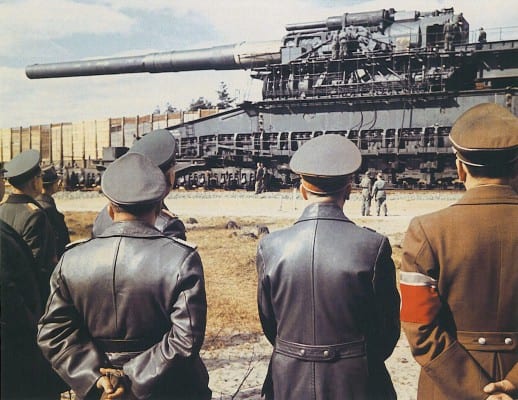
Hitler's monster Dora 800 mm Railway Gun. Here the Fuhrer inspects his new weapon, which was first used on Sevastopol, but with relatively little strategic effect. (Speer stands to the right of Hitler, wearing a red armband. Via Flickr. Click to expand.)
Of the defenders of the 365th battery only two survived – Nikolay Vorobyev, who was evacuated after being seriously wounded at the beginning of June 1942, and private Pyotr Lipovenko, who survived the final barrage and then with broken legs managed to crawl back to the nearest Soviet artillery battery, where he took part in another fight during which he was bayoneted and killed.
The only monument commemorating the heroism of the Soviet artillerymen who fought defending the Mackenzie Heights is a monument to Ivan Piyanzin. There are also two mass graves in which are buried the remains of the soldiers and commanders found at the scene of the battle. Most of the remains have not been identified. They carry the inscription, "To the unknown defenders of Sevastopol."
The German siege of Sevastopol was catastrophic for Hitler’s plans. More than 300,000 German soldiers were lost. The Germans because stuck on the approaches to Sevastopol for 250 days. Precious time was lost.
If not for the heroic battle for Sevastopol, the outcome of the battle for Stalingrad might have been different. From October 30, 1941, to the beginning of July of 1942, Sevastopol held out against the 11th German Army under the command of one of Hitler’s best generals, Erich von Manstein. The main task of the battle for Sevastopol was achieved – one of the best German armies, commanded by one of Hitler’s best generals, was pinned down, bled white and prevented from taking part in the attack on Stalingrad and on the oil fields of the Caucasus. Two years later, in the spring of 1944, the operation for the liberation of Sevastopol from the German invaders began with the storming of Fort Stalin. Taking control of this strategic height, which in 1941-2 had taken the Germans eight months, took the Red Army two days. Hitler said, “If the Russians were able to defend Sevastopol for eight months, we can do it for eight years.” Instead, it took the Red Army just four days to liberate the city. Despite Hitler’s order to stop the Red Army at whatever cost, the effort to hold on to Sevastopol turned into a disaster for the Germans. More than 23,000 soldiers and officers were taken prisoner and many more were killed. The Soviet flag was raised over the city on May 9, 1944, exactly a year before final victory. After the Yalta conference in February 1945 US President Franklin Roosevelt had a chance to see Sevastopol and the destruction the Nazis had done to the city. In his address to the US Congress on March 1, 1945, he said, “I had read about Warsaw and Lidice and Rotterdam and Coventry – but I saw Sevastopol and Yalta! And I know that there is not room enough on earth for both German militarism and Christian decency.” One cannot help but wonder what Roosevelt, one of the leaders of the anti-Hitler coalition, would make of the “wars of choice” fought by NATO and the US today.
ABOUT THE AUTHORS
is a researcher, analyst and writer and a strong supporter of social justice and human rights. For 7 years (2005 – 2012), she worked as an assistant editor with CounterPunch, a leading left political journal in the Anglophone world that exemplifies, along with The Greanville Post and a small cluster of sites, what an oppositional press should be like. Ms. Rea is a contributing author to CounterPunch, Cyrano’s Journal Today, Uncommon Thought Journal, The Greanville Post, the International Journal of Baudrillard Studies, and Russia Insider. She can be reached at rea.alya@gmail.com.
READ MORE ON FORT STALIN
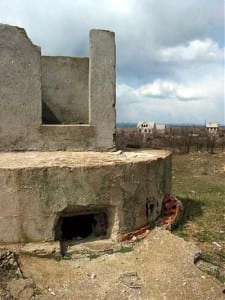 Fort "Stalin" was originally constructed in 1855 and it was not modernized until the siege of Sevastopol (1941-1945). It was manned by men of the 365th Battery (61th Flak Regiment) and elements of the 1st Battalion/1165th Infantry Regiment (345th Rifle Division). The main armaments comprised four 76.2mm AA artillery pieces. These guns were protected by three concrete MG castmates. The siege of Sevastopol: On 5 June 1942, the railway gun "Schwerer Gustav" fired six 800mm (!) shells on fort "Stalin", but failed to neutralize it. On 12 June 1942, the fort was bombed by Junkers Ju 87 "Stuka" dive bombers and the Germans fired also eleven 420mm mortar shells on "Stalin". Three of the four 76.2mm AA gun pieces were destroyed in the bombardment. At 1900hrs the Germans launched an intense artillery barrage on the fort. Soldiers of the 16th Infantry Regiment, under command of Oberst von Choltitz, moved toward the fort on 13 June, at 0300hrs. An hour later the assault teams had penetrated Stalin's barbed wire obstacles. In the following 1.5 hours, heavy combat took place in the surrounding trenches and the three concrete casemates (which faced the wrong way) were eventually neutralized. At around 0530hrs, the Soviets responded and the guns of fort "Volga" fired on its sister fortress. Three German assault guns were disabled in this attack. The fort today: It is currently abandoned and can be visited.
Fort "Stalin" was originally constructed in 1855 and it was not modernized until the siege of Sevastopol (1941-1945). It was manned by men of the 365th Battery (61th Flak Regiment) and elements of the 1st Battalion/1165th Infantry Regiment (345th Rifle Division). The main armaments comprised four 76.2mm AA artillery pieces. These guns were protected by three concrete MG castmates. The siege of Sevastopol: On 5 June 1942, the railway gun "Schwerer Gustav" fired six 800mm (!) shells on fort "Stalin", but failed to neutralize it. On 12 June 1942, the fort was bombed by Junkers Ju 87 "Stuka" dive bombers and the Germans fired also eleven 420mm mortar shells on "Stalin". Three of the four 76.2mm AA gun pieces were destroyed in the bombardment. At 1900hrs the Germans launched an intense artillery barrage on the fort. Soldiers of the 16th Infantry Regiment, under command of Oberst von Choltitz, moved toward the fort on 13 June, at 0300hrs. An hour later the assault teams had penetrated Stalin's barbed wire obstacles. In the following 1.5 hours, heavy combat took place in the surrounding trenches and the three concrete casemates (which faced the wrong way) were eventually neutralized. At around 0530hrs, the Soviets responded and the guns of fort "Volga" fired on its sister fortress. Three German assault guns were disabled in this attack. The fort today: It is currently abandoned and can be visited.
The views expressed herein are solely those of the author and may or may not reflect those of The Greanville Post. However, we do think they are important enough to be transmitted to a wider audience.
All image captions, pull quotes, appendices, etc. by the editors not the authors.
YOU ARE FREE TO REPRODUCE THIS ARTICLE PROVIDED YOU GIVE PROPER CREDIT TO THE GREANVILLE POST VIA A BACK LIVE LINK.
![]() This work is licensed under a Creative Commons Attribution-NonCommercial 4.0 International License
This work is licensed under a Creative Commons Attribution-NonCommercial 4.0 International License
[premium_newsticker id="211406"]
Don't forget to sign up for our FREE bulletin. Get The Greanville Post in your mailbox every few days.




